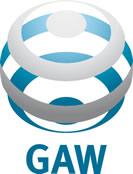SAG Reactive Gases Meeting 2016


Stanley, Australia
Scientific Advisory Group (SAG) on Reactive GasesStanley, 10-14 November 2016 |

|
|||||||||||||||||||||||||||||||||||||||||||||||||||
(click to enlarge) Meeting report |
||||||||||||||||||||||||||||||||||||||||||||||||||||
Meeting agenda and presentations
|
||||||||||||||||||||||||||||||||||||||||||||||||||||


Stanley, Australia
Scientific Advisory Group (SAG) on Reactive GasesStanley, 10-14 November 2016 |

|
|||||||||||||||||||||||||||||||||||||||||||||||||||
(click to enlarge) Meeting report |
||||||||||||||||||||||||||||||||||||||||||||||||||||
Meeting agenda and presentations
|
||||||||||||||||||||||||||||||||||||||||||||||||||||